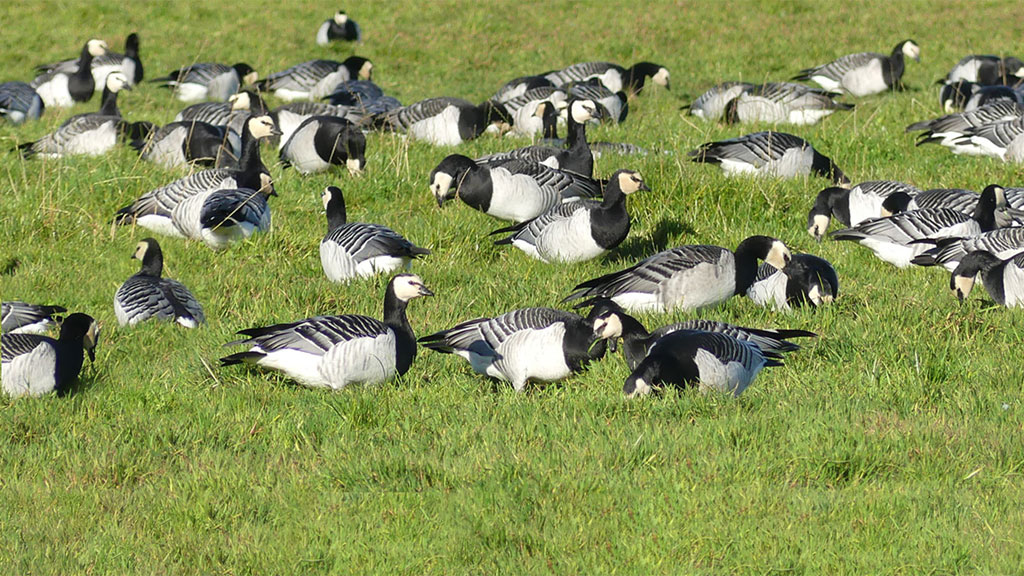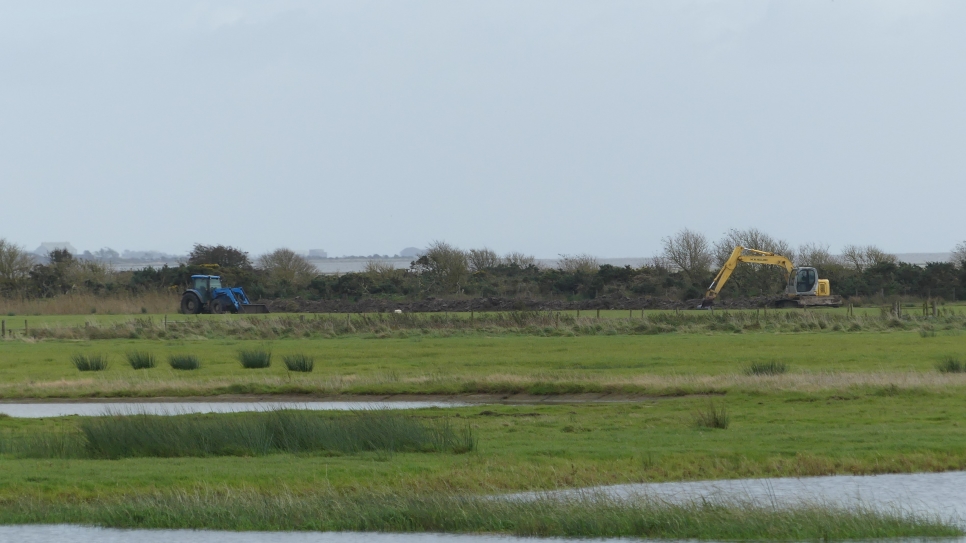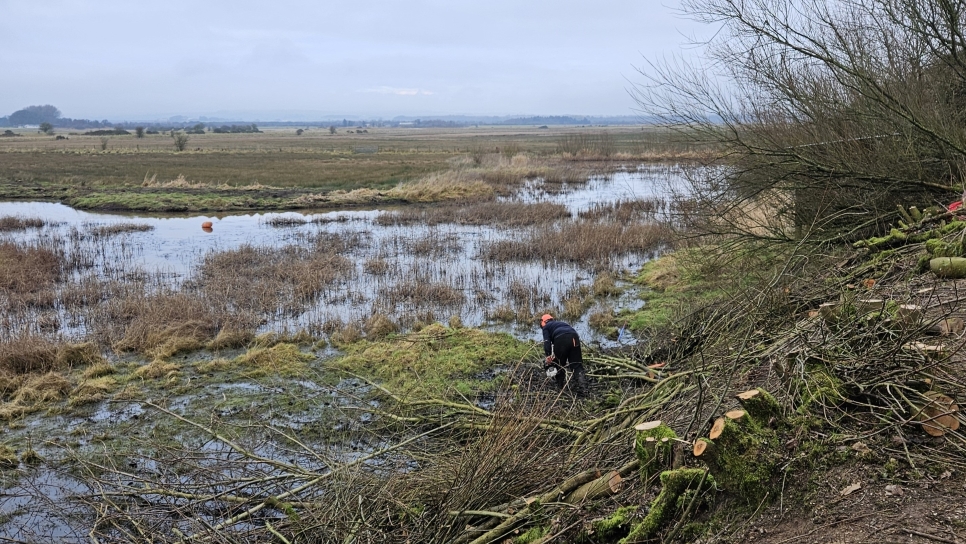It's berry colourful on the reserve!
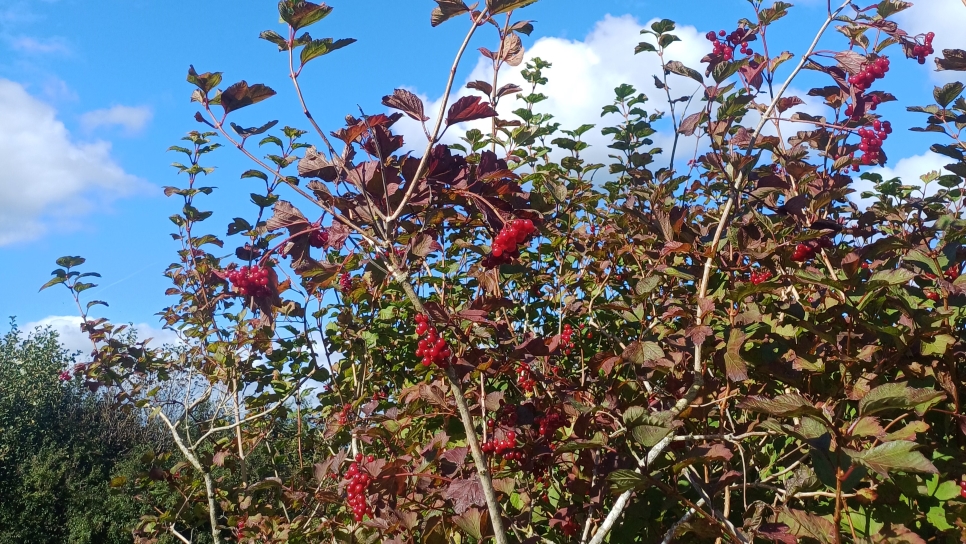
Autumn is setting the scene on the reserve, with the air getting crisper and the leaves starting to fall off the trees. Berries along the hedgerows provide colour along the loanings, whilst also being a source of nourishment for wildlife.
Blackberries are one of the best-known foraging berries for late summer and early autumn. Brambles can be seen to some as fairly vicious with their spiny stalks and prickly leaves, however they tend to thrive in most conditions. An overgrown bramble thicket can provide an abundance of food for ourselves and for wildlife, also providing them with shelter in the denser patches of scrub.
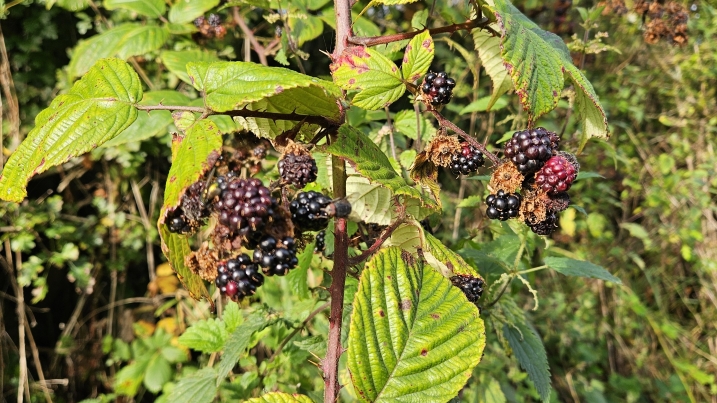
Blackberries.
Commercially, elder is mainly used in its blossoming stage, with its flowers used widely in cordials and presses. However, these flowers develop into beautiful dark purple berries that are eaten by a variety of birds, but they are particularly loved by the blackcap. Badgers also feed on these berries, and you often find elder trees around their setts. They can be mixed with other berries to make preserves, jellies, and jams.
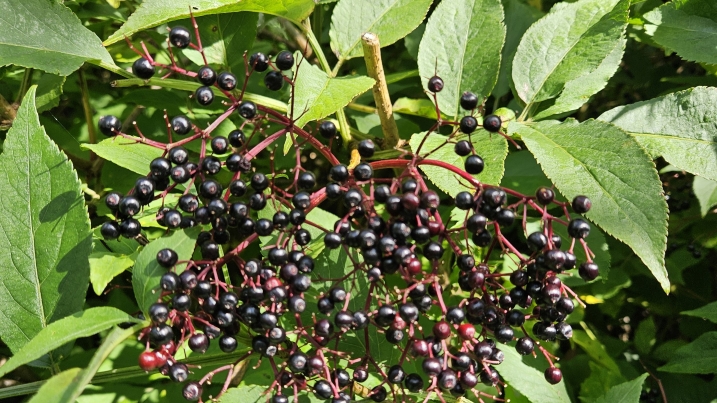
Elderberries.
Hawthorn is a common hedgerow species that produces bright red haw berries. It is one that thrives in many soil types and is known for attracting and aiding a wide range of wildlife. They are enjoyed and stripped off the hedges by thrushes as they come back in autumn, including song thrush, mistle thrush, redwing, and fieldfare.
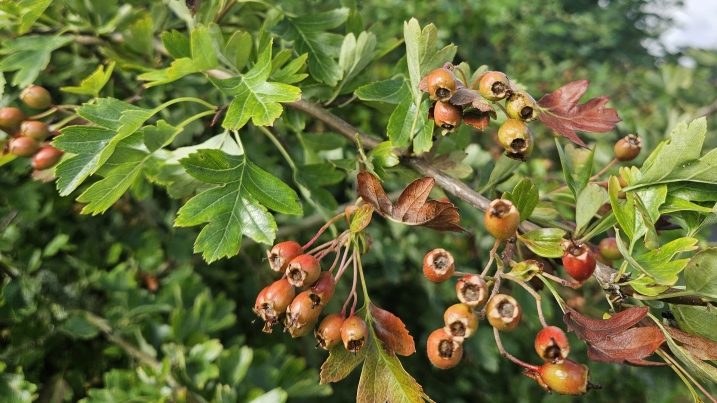
Red haw berries.
Guelder rose and rowan trees also add a scattering of red berries along the hedgerows. Guelder rose berries hang in bunches and are loved by waxwings. Rowan berries are similar to haw berries as they are both pomes, meaning they have a central seed core that is surrounded by its fruity flesh.

Guelder berries.
Dog rose gets its name from its thorns, which look slightly like a dog’s tooth. They grow rosehips, which are also taken by the thrushes and small mammals such as bank voles. They are a good source of vitamin C and can used in sweet jellies and syrups.
Blackthorn have had a productive year for sloe berries, with many seen on the lead up to the Peter Scott Observatory. These dark blue stone fruits are best known for making sloe gin but can also be used as a dye. They’re taken by thrushes and finches for their nutritional benefits and flavour.
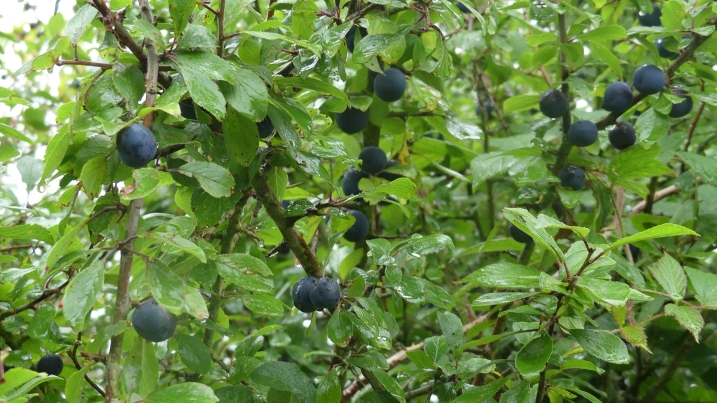
Sloe berries.
When foraging hedgerows for fruits and berries it is important to be mindful of others and to harvest sustainably. Never take more than what you need, and make sure to leave plenty behind for the wildlife as well as for plants to be able to seed and regrow. By foraging in a responsible manner, we can learn more about our native plants and engage more with the environment around us and ensure wild plants remain available to us for years to come.
Words by Rebekah Allison
Pictures by Rebekah Allison and Saoirse Murphy-Collot
